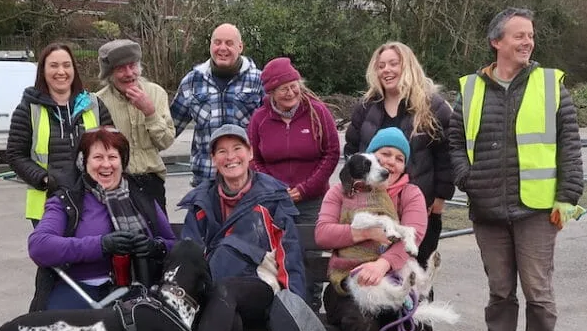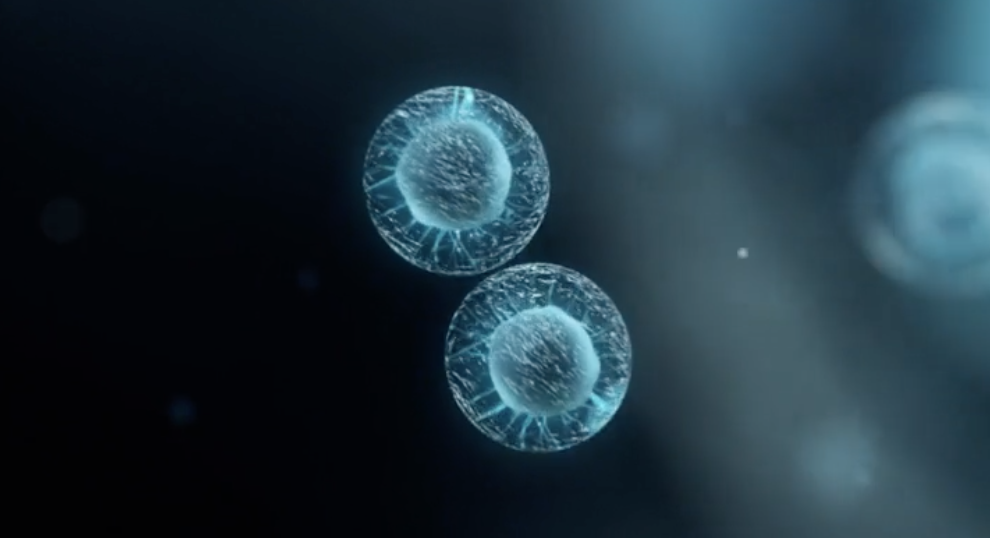Chris Baines: Urban Wildlife

Chris Baines, one of the UK’s leading independent environmentalists, talks to Carbon Copy about our changing attitudes towards urban wildlife and the opportunity for greater connectivity.
Carbon Copy: Your TV programme in 1984 about the making of a wildlife garden, ‘Bluetits and Bumblebees’, and subsequent book, ‘How to make a wildlife garden’, brought about the start of the modern wildlife gardening movement. Before this, in most people’s minds, nature was something to control or even eradicate. Why did you think there’d be any interest in turning gardens and urban spaces into wildlife havens?
Chris Baines: I grew up on the edge of Sheffield, in a family of gardeners who also loved walking in the countryside, so combining the two just seemed very natural. I had spent my university education in horticulture being taught how to kill things, and I knew that there must be many people like me, who wanted to make a positive difference whilst enjoying more wildlife on the doorstep.
CC: What was the reaction to your TV programme?
CB: Viewers loved it. I had created a “Rich Habitat Garden” on Gardeners’ World back in 1979, and despite the presenters’ very sceptical reaction then, the BBC was deluged with requests for more information. The reaction to ‘Bluetits and Bumblebees’ was just as enthusiastic.
CC: Why do you think allowing nature to live alongside us, especially in gardens, had fallen out of favour?
CB: There was still a hangover from the WWII Dig for Victory campaign, and the nursery industry was aggressively marketing garden chemicals and low-maintenance evergreen planting.
CC: You’re a horticulturalist by training, what made you specialise in wildlife gardening?
CB: I’ve always loved nature, I had been involved with my local wildlife trust, and saw domestic gardens as a great opportunity to bring people and wildlife closer together.
CC: What are the main barriers you’ve had to deal with when trying to change attitudes and persuade people to think in a different way about wildlife?
CB: It has always been difficult to persuade people that wildlife gardening is not an excuse for neglect and laziness. The best wildlife gardens are a clever combination of horticulture and ecology.
CC: The sight of a roadside verge festooned with wildflowers is becoming a common sight where previously they were mown to an inch of their life. Advising councils about managing biodiversity and their local environment is part of your work as an environmental consultant. How difficult has it been to change their approach and what constraints were they dealing with?
CB: Changing attitudes gets easier as more good examples emerge, and the late great Miriam Rothschild was a tremendous champion in the early days. Simply stopping mowing is an easy “sell.” Adopting a more sophisticated management regime is more of a challenge, but there are now great role models in parks and on road verges. The public can help by taking the time to praise the pioneers.
CC: You’ve obviously seen huge changes in attitudes during your career towards bringing nature into towns and cities. Are there any particular reasons behind this that you can put your finger on?
CB: I think the link between healthy living and access to nature has been the biggest single factor. Now the role of urban greenspace in moderating the effects of climate change is helping to strengthen the case for living landscapes close to home.
CC: How easy is it for an individual or a community group to make changes that really make a positive difference for wildlife?
CB: Every small contribution makes a difference, but when whole neighbourhoods come together and begin to link wild green spaces together, that really makes a great contribution to conservation.
CC: How do you personally feel now, after all the hard work you’ve put into changing attitudes and being a champion for re-introducing nature into our lives? There are still plenty of doom and gloom stories about biodiversity loss – are you pessimistic or hopeful?
CB: This has to be the moment when we reverse the destructive trends of the past 75 years. We know how to bring our lost wildlife back, and I think the signs are more encouraging now than ever. I sense that there is a powerful appetite for nature recovery.
CC: What’s next for wilding our towns and cities? How do you envision they’ll look by 2050?
CB: Connectivity. We need to strengthen the green corridors that will enable wildlife and people to travel around more sustainably, and we need to combine conservation with our response to climate change. We need cooler, greener landscapes close to where we live and work.
CC: As well as being an award-winning writer and respected environmental consultant to central and local government and the corporate sector, Chris also supports many environmental charities and is President of the Thames Estuary Partnership. He presents the partnership’s award-winning film ‘The Living Thames’, an odyssey along the river, exploring its changing ecology as it meanders to the sea. It is now available to watch on Vimeo and all funds raised by this film will fund the sequel, The Historic Thames. Also, please look out for the RHS’ new Companion to Wildlife Gardening, due out this autumn!
Photo kindly provided by Nerys Jones.
Recommended from Carbon Copy
-

Copy These! 5 Big Local Ideas About Using Decentralised Energy
Communities around the UK are generating their own electricity - through solar, hydro and wind. But how can they ensure…
-
 Affordable Energy, Buildings & Places, Climate Action, Good Food, Greater Fairness, Health & Wellbeing, Less Waste, More Jobs, Strong Communities
Affordable Energy, Buildings & Places, Climate Action, Good Food, Greater Fairness, Health & Wellbeing, Less Waste, More Jobs, Strong CommunitiesCopy These! 5 Big Local Ideas About Creating A Community Hub
Learn how communities are reinvigorating once-forgotten spaces, to bring local environmental, social and economic benefits.
-

Are Cows Worse Than Cars?
Which is the bigger contributor to climate warming: cows or cars? To answer this question properly, it helps to break…
-

Carbon.Copy.
We are natural born copiers. It’s something all of us do, all the time. Our collective power comes from how…